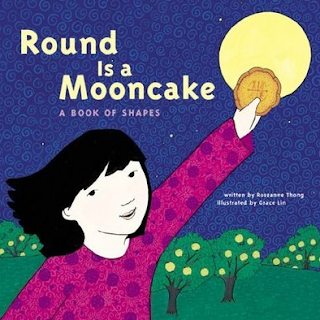
Manfish: A Story of Jacques Cousteau
Jennifer Berne (2008), 32 pages
Illustrated by Eric Puybaret
Audience: pre-K
Format: picture book
From the onset, readers will be captivated not only by the author’s poetic words but by the illustrations which seem to seep off the page onto your hands and into your lap. Text sways and waves as though rippled in the water … “Bubbles rising through the silence of the sea, silvery beads of breath from a man deep, deep down in a strange and shimmering ocean land of swaying plants and fantastic creatures, a manfish swimming, diving into the unknown, exploring underwater worlds no one has ever seen and no one could ever have imagined.” So begins the amazing life story of Jacques Cousteau who was an inventor, diving pioneer, naval officer, moviemaker, author, photographer, and advocate for marine life and ecology.
This story begins when Jacques is a boy – he discovered a love of water at an early age as he swam and played at the ocean’s edge. By nature, he was very curious and inquisitive; he wondered about the world around him; “He wondered why ships floated. Why he floated. And why rocks sank.” Fascinated by the sea, boats, and with building things, along with an appetite for mechanics, he read blueprints, invented, experimented, and built models. As a child, Cousteau was also interested in film and how movies were made; buying a camera he filmed himself and his family constantly. As Cousteau interests grew so did his desire to explore, he dreamed to one day “swim through the sea as free as a fish … to become a manfish.”
Cousteau’s love of the ocean, innovative spirit, and ability to photograph and film oceanic creatures took him on many wonderful adventures. Berne’s book takes the readers on a tour of some of these highlights from his naval service to boating expeditions where he filmed and photographer rarely seen marine life. “They discovered plants that you could feed you. Plants that could poison you. Plants that looked like fish … and fish that looked like plants.” Important inventions are mentioned too, including the aqua-lung, a device, which allowed divers to breath underwater and dive deeper for longer periods of time.
As Cousteau further explored the ocean he shared his findings with the world, releasing many films, writing books, and documenting his discoveries. His research was groundbreaking. But, as the years passed, he began to notice that marine life suffering from pollution and chemicals; precious marine life was dying. Cousteau’s next objective was to protect the ocean and its inhabitants. He made more movies to warn people of the dangers of pollution and asked people to save the oceans in hopes that future generations could experience them in all their glory.
Using carefully chosen text and simple sentences, the author takes a complex biography such as Jacques Cousteau and underwater discovery and makes it both relatable and interesting for a young audience. Berne’s words are appropriate and descriptive without being over-done ... in effect, speaking directly to young listeners. Fellow Frenchman, Puybaret’s illustrations are truly beautiful and almost echo the ocean … some are dark and ominous while others are bright and lively.
Find time to share this book with your little one and teach them to love the ocean as much as Cousteau did! This book would work well for story-times that discuss French, science, or the ocean. For a story-time companion try singing a round of “Frère Jacques” or “Baby Beluga” depending on your theme.
Frère Jacques, Frère Jacques
Dormez-vous? Dormez-vous?
Sonnez les matines. Sonnez les matines.
Ding Dang Dong. Ding Dang Dong.
Or
Baby Beluga in the deep blue sea,
Swim so wild and you swim so free.
Heaven above, and the sea below,
And a little white whale on the go.
Baby beluga, baby Beluga, is the water warm?
Is your mama home with you, so happy.
Way down yonder where the dolphins play,
Where they dive and splash all day,
The waves roll in and the waves roll out,
See the water squirting out of your spout.
Baby beluga, baby Beluga, sing your little song,
Sing for all your friends, we like to hear you.
When it's dark, you're home and fed,
Curl up snug in your water bed.
Moon is shining and the stars are out,
Good night, little whale, goodnight.
Baby beluga, baby Beluga, with tomorrow's sun,
Another day's begun, you'll soon be waking.
Baby Beluga in the deep blue sea,
Swim so wild and you swim so free.
Heaven above and the sea below,
And a little white whale on the go.
You're just a little white whale on the go.
-by Raffi and Debi Pike
Reviewed by: Katharine Conn, MLIS
If you liked this book, you may like: Down, Down, Down: A Journey to the Bottom of the Sea by Steve Jenkins, The Fantastic Undersea Life of Jacques Cousteau by Dan Yaccarino, or Way Down Deep in the Deep Blue Sea by Jan Peck
Other books by this author: Calvin Can’t Fly: The Story of a Bookworm Birdie
Other books by this illustrator: Puff, the Magic Dragon, Over the Rainbow, Cache-Luna, When You Wish Upon a Star, The Nutcracker, and The Night Before Christmas
























